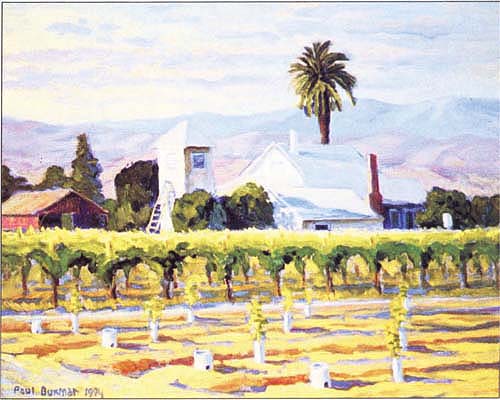All Issues
Partnerships key to sustainable agriculture
Publication Information
California Agriculture 55(3):6-7.
Published May 01, 2001
PDF | Citation | Permissions
Full text
Bucking the trend toward increasingly industrialized agriculture, some “new American farmers” are working collaboratively to develop profitable, environmentally friendly production systems, University of Missouri Professor Emeritus John Ikerd told about 250 agricultural professionals at a recent UC conference on sustainable agriculture partnerships.
“They're the revolutionaries and explorers,” Ikerd said. “They have the courage to look beyond what is quick, convenient and cheap. And more and more of them are finding ways to succeed.”
“Partnerships for Sustaining California Agriculture: Profit, Environment and Community,” held at the Heidrick Ag History Center in Woodland on March 27 and 28, explored ways of encouraging farmers and ranchers to embrace innovative systems that seek to combine profitability with environmentally friendly practices.
“We wanted to build on the successes that we know are out there,” said conference co-chair David Chaney of the UC Sustainable Agriculture Research and Education Program (SAREP). With important pesticides likely to be eliminated and profit margins tighter than ever, the need for creative farming practices is great, Chaney said.
Conference objectives included identifying goals and barriers, quantifying existing knowledge about partnerships, setting priorities, and promoting greater interaction among stakeholders. The major sponsors were U.S. Environmental Protection Agency Region 9, California Department of Pesticide Regulation, UC Davis University Extension, U.S. Department of Agriculture Western Region/Sustainable Agriculture Research and Education, California Department of Food and Agriculture (CDFA) and Clarence E. Heller Charitable Foundation.
Sustainable agriculture partnerships are voluntary projects that bring together growers and commodity associations with scientists, regulators and other interested parties to develop systems for reducing pesticide usage and limiting other environmental impacts of agriculture. They usually involve the formation of management teams, field days to demonstrate practices, and intensive field monitoring to facilitate better-informed decisions about pest control.
Since the early 1990s, several dozen projects have been initiated in California. Under the umbrella of UC SAREP's Biologically Integrated Farming Systems (BIFS) program, projects have included almonds, walnuts, wine grapes, prunes, rice, citrus, strawberries, dairy management and pome fruit. Other public-private initiatives have included eggs, organic cotton and livestock grazing.
The projects strive to improve entire agricultural systems, rather than addressing pest-management problems individually. “This is a time-intensive, labor-intensive approach,” Chaney said.
“My experience is that the partnerships all are very different,” said Mark Cady of Community Alliance with Family Farmers, a nonprofit organization that promotes sustainable agriculture through partnerships and other means. “Technical things about the crop can have a tremendous impact on how projects are put together.”
Joe Martinez of Martinez Ranches, who grows almonds, dried plums and walnuts in Solano and Yolo counties, participated in a BIOS (Biologically Integrated Orchard Systems) project. “The scouts and advisors became my consultants. They became part of my team,” Martinez said.
More than 250 people attended a recent conference in Woodland on utilizing partnerships to promote sustainable agricultural practices. Dinuba artist Paul Buxman, who paints in the southern San Joaquin Valley, provided artwork for the conference materials.
Working with UC Cooperative Extension advisors also provided an opportunity to “filter up my needs” to agricultural researchers, Martinez said. “It's kind of an ivory tower over there and we need to bring them back to reality.”
While endorsing budget increases for sustainable agriculture, California State Assemblymember Fred Keeley (D-Monterey) said partnerships should diversify their outreach and scope. “Let's partner up around notions of social justice,” Keeley said. “The impacts of traditional agriculture are greater on communities of color and low-income people.”
At the same time, some conference participants worried that growers may not continue to use environmentally practices after project funding ends. “How do you move these programs along so they're adopted for the long term?” asked Carolyn Pickel, a UC integrated pest management (IPM) advisor who has worked with numerous partnerships.
In his keynote, Ikerd encouraged participants to persist in their pursuit of this goal. “Stewardship is not a sacrifice,” Ikerd said. “It's one of those things that give meaning to our lives.”





